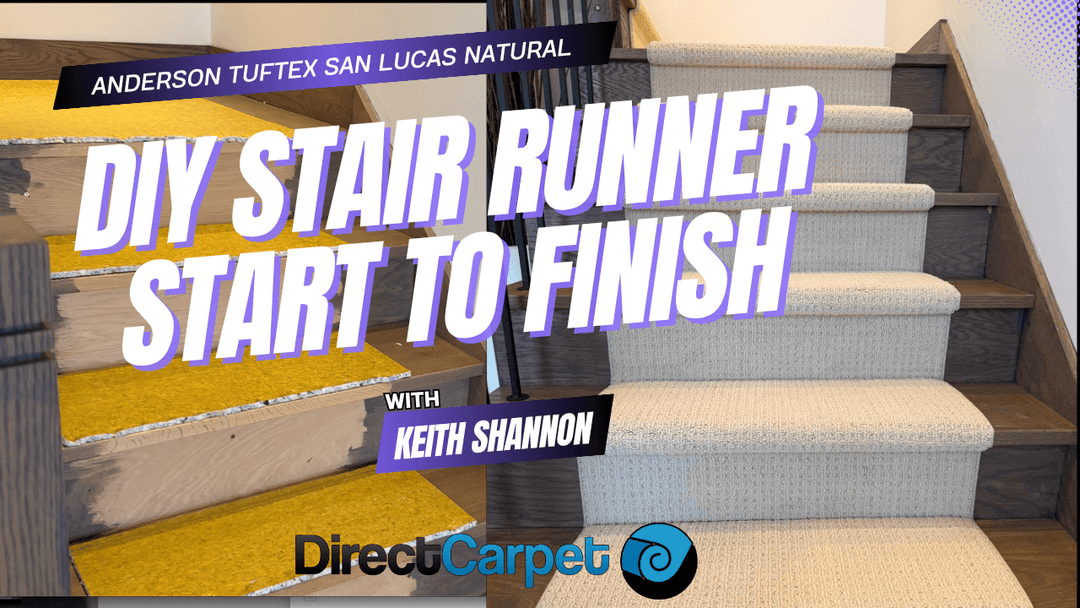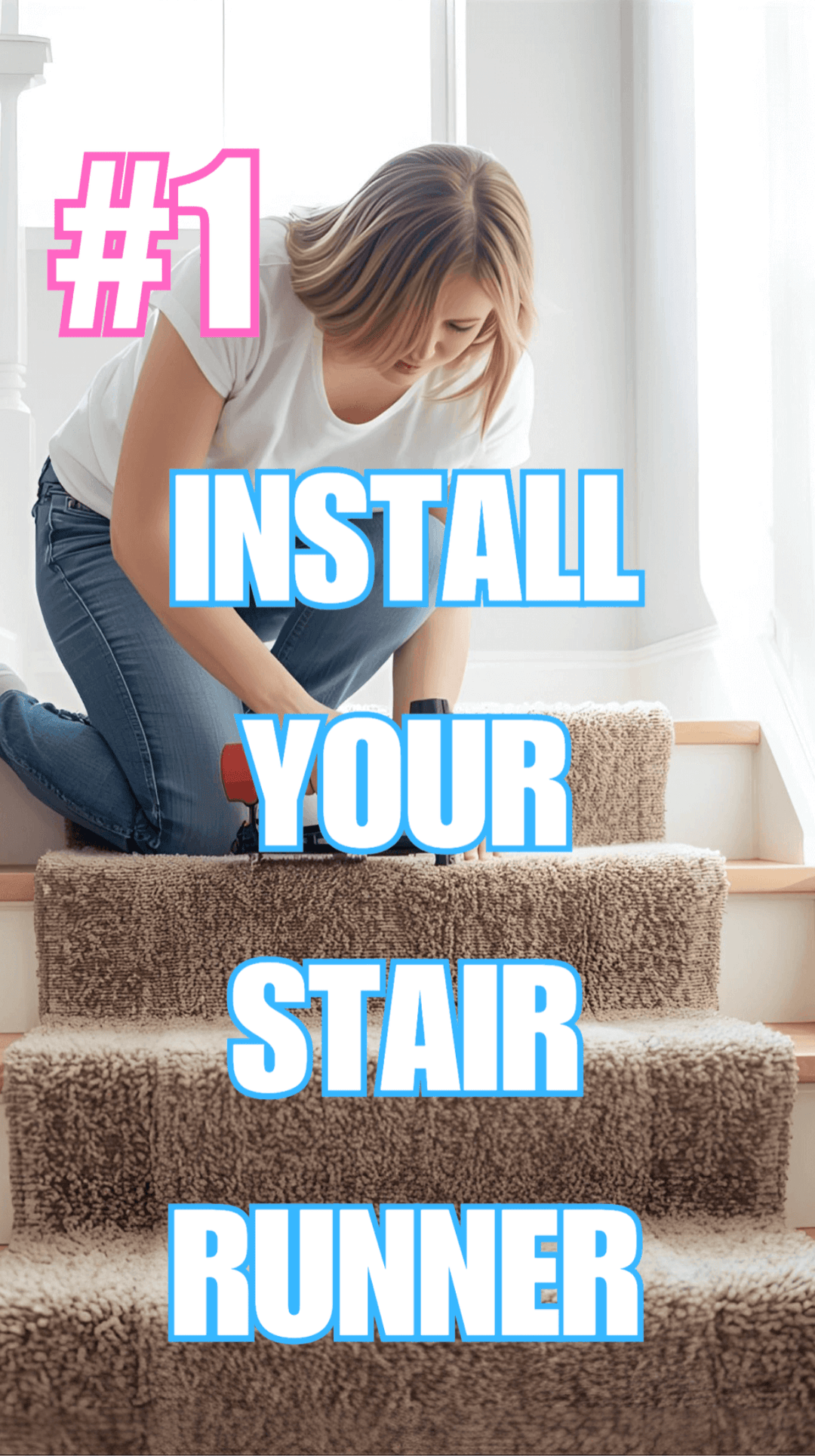Can You Put a Stair Runner Over Carpet?
Updated October 2025: This guide now includes professional installation tips from DirectCarpet.com on how to safely install a stair runner over existing carpet.Stair Runner Over Carpet? Your Essential Guide to Elevating Stairs with Style
👈 Back to Main Stair Runner Collection Page
Considering “Can you put a stair runner over carpet?”
Yes, it’s possible. This article cuts to the chase on how to enhance your carpeted stairs with a runner, focusing on the seamless integration of function and style.
You’ll get the essential knowledge to confidently decide whether stair runners are suitable for your home and how to install them with finesse, without getting into sales pitches or excessive detail.
Key Takeaways
-
Yes, you can place a stair runner over carpet to amp up style, improve safety, and protect the underlying carpet from wear and tear.
-
When choosing a stair runner, opt for durable, low-pile materials, and consider aesthetics that complement your space while factoring in practical installation width.
-
DIY installation of stair runners over carpet can be straightforward with double-sided tape and staples, but for complex staircases, professional installation is recommended.
Exploring the Possibility: Stair Runners Over Carpet

Many homes feature carpeted stairs, providing a soft landing with each step.
Yet, even these cozy treads can benefit from the added allure of a stair runner.
While traditionally laid over hardwood stairs, the question arises: can you lay a stair runner over an already carpeted staircase?
It might not be the norm, but it’s certainly a possibility worth considering for those seeking to refresh their home’s aesthetic, increase comfort underfoot, and add a layer of protection to their existing carpet.
A stair runner over carpet goes beyond aesthetics; it’s a design approach that brings practical advantages. The installation process is straightforward, especially when using durable materials that ensure longevity. It:
-
Shields carpeted stairs from inevitable wear
-
Muffles the sound of bustling feet
-
Creates a striking focal point that can tie a room together
-
Improves the comfort of climbing stairs by providing a cushioned path, thereby reducing the risk of slipping - an advantage for both safety and peace of mind.
However, opting for this design choice requires some considerations.
A stair runner installed over carpet can be a tripping hazard if not secured properly and may lead to faster wear of the carpet beneath due to concentrated foot traffic.
Moreover, the trapped dirt and allergens between the runner and the carpet might require frequent vacuuming to maintain a clean and healthy home environment.
Despite these concerns, the right carpet runner can transform your staircase into a statement piece that stands out.
With a mindful approach to selection and installation, you can strike the perfect balance between fashion and function, ensuring your carpeted stairs are not only covered but also celebrated.
The Selection Process: Choosing the Right Stair Runner
Choosing the appropriate carpet runner for your carpeted stairs resembles selecting the ideal dress for a significant event - it should be both appealing and apt.
The material of your stair runner carries significant weight in this decision.
In high-traffic areas, you’ll want a durable, low-pile option such as nylon or wool blends that can withstand the flurry of feet without bunching or fraying.
For those with a penchant for natural aesthetics, sisal’s durability makes it a favored choice, though jute’s looser weave might falter under the pressure of pitter-patter.
Aesthetics also hold importance. Patterned designs can add a unique touch to your stairway. Consider the following when choosing a stair runner:
-
Small patterns and soft textures can provide comfort and complement your home’s unique style.
-
A stair runner with contrasting colors or bold patterns can act as a mesmerizing visual anchor in your decor.
-
Aim to leave a glimpse of the carpeted stairs on each side for visual balance, ensuring the runner is narrower than the treads and straight as an arrow. The installation method should ensure the runner is securely in place.
Custom stair runners provide a wide range of personalization options, letting you select materials and edging as per your preference. Some examples of custom stair runner options include:
-
Sisal with a sleek black cotton banding running down your staircase
-
Wool with a decorative border in a contrasting color
-
Patterned carpet with a coordinating binding
It’s these touches that elevate a simple stairway into a luxurious ascent.
Remember, the right carpet runner is more than just a covering; it’s a statement of your style and a testament to your consideration for the longevity and beauty of your staircase.
In fact, area rugs, carpet runners, and wood floors can also play a similar role in enhancing your home’s aesthetics.
Installation Insights: How to Secure a Stair Runner Over Carpet
How to Install a Stair Runner Over Carpet (Pro Tips from DirectCarpet.com)
Yes — you can absolutely install a stair runner over existing carpet, but it takes a slightly different approach than installing on bare wood stairs. Here’s how to do it the right way so it looks professional and holds up safely over time.
Tools You’ll Need
-
Staple gun (optional, see note below)
-
Hammer and tucker
-
Carpet kicker
-
Measuring tape and utility knife
-
Decorative stair rods (metal bars with brackets)
-
Screws and drill
Step-by-Step Installation
-
Skip the padding.
Don’t add pad on top of your existing carpet — it already has cushion underneath. Adding more padding makes the stairs too soft and unsafe. You want the stair runner to sit firm over the existing carpet. -
Lay your runner over the carpet.
Center the runner carefully, leaving equal margins on both sides. A stair runner calculator (https://directcarpet.com/pages/stair-runner-calculator) helps you find the perfect length and width. -
Secure with stair rods.
This is the real pro trick most people miss. Because you’re installing over carpet, a staple gun usually won’t penetrate both layers — carpet plus pad. Instead, use decorative stair rods with two screws at each end to anchor the runner in place. They not only hold it securely but also give a high-end, polished look. -
Go with a waterfall finish.
You’ll likely need to use the waterfall installation method — where the runner flows over each step without wrapping tightly around the tread — since the underlying carpet makes wrapping difficult. It still looks clean and professional when done neatly. -
Check for tightness.
Once the rods are installed, use your kicker to snug the runner into position between each step so there’s no loose fabric or ripples.
Pro Installer Notes
Many people try to staple through both carpets — and that’s where it goes wrong. Unless you’re using an industrial-grade stapler with extra-long staples, it won’t hold. The metal stair rods solve that problem and keep everything secure. Plus, they make it easy to remove the runner later if you ever replace the carpet underneath.
You can use any stair runner from DirectCarpet.com (https://directcarpet.com/collections/stair-runners) for this kind of install — nylon, wool, or blends all work beautifully when centered and tightened correctly.
Customization and Creativity: Personalizing Your Staircase

Your staircase ought to be more than merely a series of steps; it should serve as a platform for your creative expression.
Custom designs can elevate the look and feel of your staircase, making it uniquely yours.
Why not introduce textured tiles or a vibrant wall mural alongside your staircase to create a seamless transition from hallway to landing? This personalized touch can speak volumes about your style and character.

If you’re looking to utilize every nook of your home, consider turning the often-underused space beneath your staircase into a cozy seating area.
It’s not only a clever use of space but also an opportunity to add a dash of design to an otherwise forgotten corner of your abode.
And for those with a traditional flair, wall paneling can transform a basic staircase into a stately architectural feature that commands attention.
Modern materials like wooden slat wall cladding can revolutionize your under-stair area, turning it into a focal point that guests won’t soon forget.
But why stop there? Painting your staircase in a bold hue such as black or deep navy can anchor your hallway with a statement that’s both sophisticated and dramatic.
And in spacious homes, a T-shaped stair can become the elegant centerpiece, ensuring a grand first impression.
To maintain an airy feel, consider pairing your staircase with glass balustrades, allowing light to flow freely between floors.
And for a mix of form and function, bespoke storage solutions near or beneath your staircase can keep your space tidy while enhancing its aesthetic.
Don’t forget the finishing touch—decorative rods not only secure your stair runner but also add an extra element of elegance to the entire staircase.
Safety First: Preventing Slips and Falls
Even though the style of your staircase is important, safety should not be compromised. Stair runners are more than just charming additions; they’re a safety feature that can prevent your loved ones and furry friends from experiencing a slip-up on those carpeted stairs.
To enhance traction and minimize the risk of falls, consider incorporating non-slip safety treads or carpet stair treads with grippy, slip-resistant backing.
Additionally, look for other safety features such as handrails and proper lighting to further ensure a secure environment.
Attachable stair treads with hook-and-loop fasteners are ideal for those seeking a solution that is easy to install and clean.
They can be secured in a snap and whisked away for washing without a fuss. Adhesive treads, on the other hand, offer simplicity in installation but might call for a tape change now and then.
For those who prefer a more traditional approach, carpet tacks can be used to secure stair treads in place.
We must also consider our four-legged family members. Stair runners can also be a boon for pets, offering them the traction they need to ascend and descend without fear.
After all, a staircase should be a safe passage for all members of the household, not a slippery slope to worry about.
By prioritizing safety and selecting the right synthetic materials, your staircase can be a secure, soft, and stylish path that stands up to the wear and tear of life’s daily hustle and bustle.
Transforming Spaces: Before and After Showcase
The ability of a stair runner to transform a space is truly remarkable.
Take the waterfall style, which allows the runner to cascade over the edges of each step, or the wrap style that hugs each tread with precision—both can turn bare wood into a runway of elegance.
Even the narrowest and most antique of staircases can don a bespoke look with a tailor-made runner that accentuates their original charm while maintaining the proper margins.
It’s this kind of customization that can make your stairs a testament to time-honored beauty.
Introducing a stair runner can:
-
Alter the appearance of your staircase
-
Revamp the whole atmosphere of your entryway or stair area
-
Introduce a polished finish that elevates the feel of your house, from the bedroom to the baseboard
-
Enhance the visual appeal of your home.
As you stand back and admire the transformation, it becomes clear that a stair runner is more than just a piece of fabric—it’s a creator of space, a definer of style, and a changer of atmospheres. In fact, it has the same impact as a well-chosen rug in any other part of your home.
Summary
From the careful selection of a stair runner that complements your home’s aesthetic to the meticulous installation over carpeted stairs, we’ve journeyed through the essentials of elevating your staircase with style. With safety as a paramount consideration and personalized touches that reflect your unique taste, your staircase can become a standout feature of your home. Let these insights inspire you to create a space that’s not only functional but also a true reflection of your design ethos.
Frequently Asked Questions
Can stair runners be installed over any type of carpet?
Stair runners should not be installed over any type of carpet because it can cause wear, potential safety hazards, and trap dirt and allergens. Ensuring the runner is properly secured is essential to prevent tripping hazards.
What materials are best for stair runners on high-traffic stairs?
Nylon or wool blends are the best materials for high-traffic stair runners as they are durable and easy to maintain, while sisal is another good option for its durability. Jute may be too loose for this purpose.
How wide should a stair runner be installed?
You should install a stair runner so that at least 2 inches of the stair are exposed on each side, ensuring visual balance and a narrower width than the stair treads. This is important for both safety and aesthetics.
Are stair runners safe for pets?
Stair runners are safe for pets as they provide better traction and prevent slipping, making them especially beneficial for older pets or those with mobility issues.
Can I install a stair runner myself, or should I hire a professional?
You can install a stair runner yourself, but if your staircase has complex elements like multiple landings or hardwood stairs, it's best to hire a professional for a secure and visually appealing result. Professional installation is recommended for such cases.











On this page https://directcarpet.com/blogs/blog/can-you-put-a-stair-runner-over-carpet#
One place says you can install a runner over carpet. But in the FAQ it says it can’t…
Leave a comment